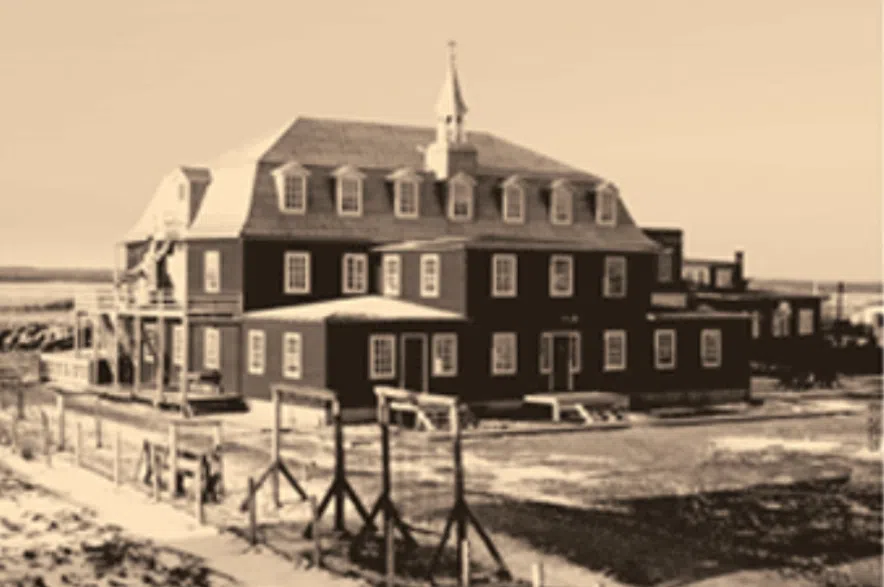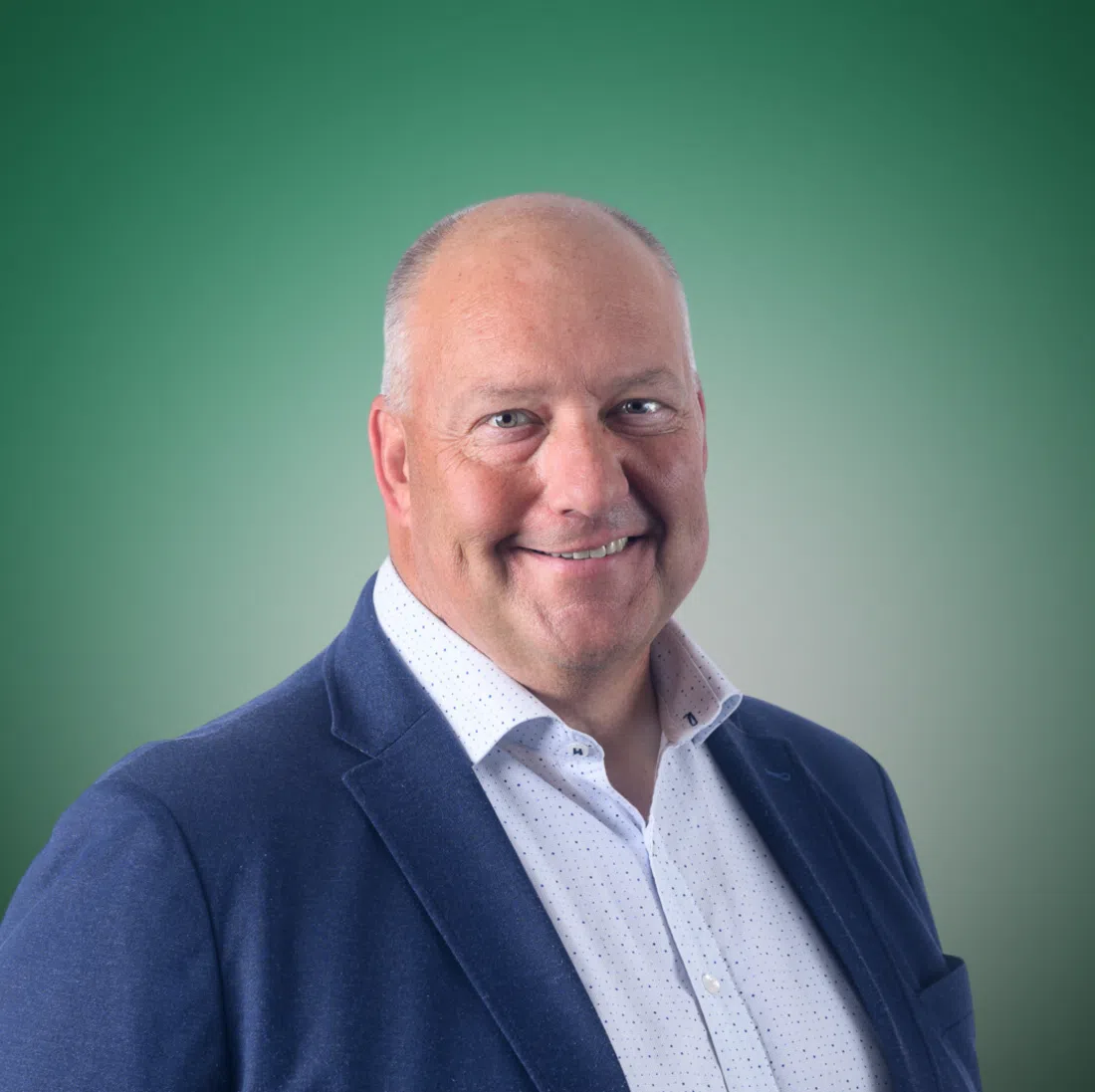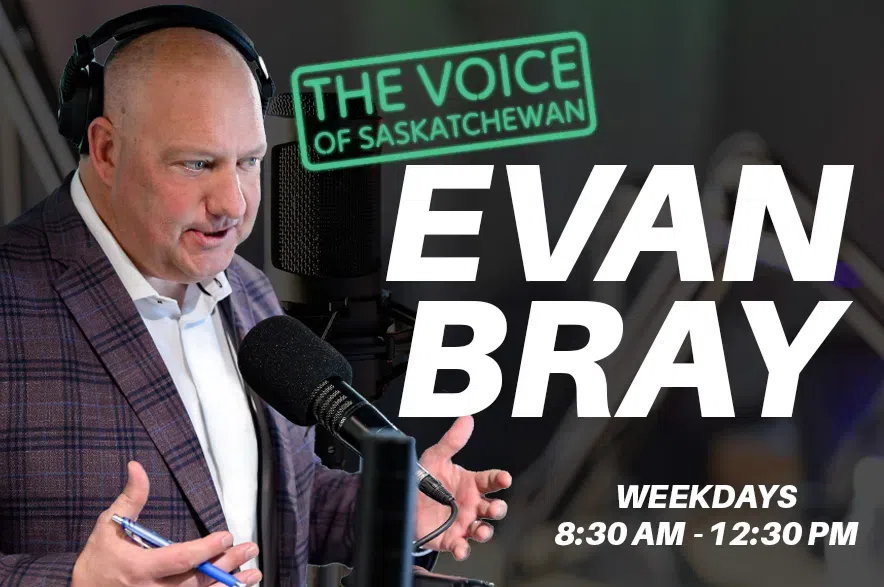Warning: This story contains details of residential schools that may be upsetting to some readers. Find the 24-hour Indian Residential School Crisis Line at 1-866-925-4419.
The Métis Nation-Saskatchewan (MN-S) says the province’s apology for its role in the operation of the Île-à-la-Crosse School is a prime example of Truth and Reconciliation in action.
The Government of Saskatchewan apologized on Monday for its role in the operation of the Île-à-la-Crosse School, and agreed to $40.2 million in restitution to the school’s former students.
Read more:
- Culture celebrated on National Truth and Reconciliation Day in Saskatchewan
- Why do people wear orange on Truth and Reconciliation Day?
- A heartbreaking history: How Saskatchewan students learn about residential schools
MN-S Self Government and Self Determination and Justice Minister Brennan Merasty was on The Evan Bray Show on the National Day for Truth and Reconciliation and said a lot of survivors appreciated Premier Scott Moe making that apology.
He said the chapter does not end here though, as this marks the beginning of the healing process.
Listen to Brennan Merasty on The Evan Bray Show:
The following questions and answers have been edited for length and clarity.
EVAN BRAY: How did the apology from the Government of Saskatchewan make you feel?
BRENNAN MERASTY: My emotions were running high, and I’m still feeling those emotions, because of all our kokums, and mosom’s, our aunts, our uncles, our families.
My late father Allan Allard Arthur McCallum was a survivor, and he took his story to the grave, and it wasn’t until after his passing that my brothers and I came to learn about his experiences. It helped us in our healing, on our healing journeys.
As Premier Moe said, there are inter-generational impacts, and he’s not wrong. We see it alive and well every day in our communities throughout the province and our Indigenous communities.
Our late father didn’t talk about it, didn’t acknowledge it, and now it’s up to me and my brothers to change that story, acknowledge his story, and speak about it. So we’re doing that every day as we go down the path of healing for ourselves.
BRAY: What about the even younger generations of Métis citizens in the province? How do you think they view residential schools, the apology and the announcement?
MERASTY: The apology was a good thing. A lot of survivors appreciated Premier Moe and his government for doing that. It does go a long way as we move this file forward. It is a prime example of Truth and Reconciliation in action.
For our younger generations, we need to teach them about the residential schools, the actual history, and tell that story. We cannot sugar-coat it because there’s such a disconnect from what actually took place to where we are today, and institutional concepts like that no longer work for our people, or anybody for that matter.
As our local president Louis Gardiner stated, they were designated numbers in replacement of their names, and numbers are used in the current institutions we have in society, so it’s time to change the path forward.
We got to talk about residential schools, what took place, what didn’t work for our people, and that’s more like boxing us in and stripping us of our identity, our culture, our values, and, more importantly, our language. The young people need to be educated.
The survivors, in speaking with Premier Moe yesterday, were talking about calls to action that are Métis specific to who we are, our realities, because so many families are disconnected, and that is in relation to the intergenerational impacts we see every day, and we need to get to work on that front.
BRAY: How are Métis people are doing when it comes to being recognized as part of Truth and Reconciliation?
MERASTY: It’s been a long time coming for our Métis people, our Métis Nation, the Saskatchewan government. The work on the residential school here at Île-à-la-Crosse has been ongoing for 30-some years.
The late Don Favel initiated the process with other local community members such as Phillip Durocher, who is still a part of the coordination and support behind the scenes for our survivors committee.
The Métis Nation for a lot of years had to bum, beg, and borrow to find the funds to be able to deal with this file, to move it anywhere, let alone to the courts. Through the self-government recognition agreements with Canada, the Métis Nation-Saskatchewan, with direction from the survivors committee in 2019, was able to financially support and cash manage the committee and the work that they had to do, which is well over $2 million in legal.
It takes a lot of lobbying. We’re changing attitudes from decades of ingrained education and behaviours so it’s about starting with getting to know each other, and telling those stories, so that you can begin to understand where I come from, who I am, and where we’re going.
Our government has done that work and we continue to do that, and we have a long way to go yet. We have so many other files in front of us, but now the healing begins. We get to turn the page and begin the healing process with our kokums, mosums, and our young families, so that our people can be aligned in who they are, find their spirit, and find their strength to move forward.
BRAY: Have you talked about how restitution will roll out?
MERASTY: There are some small details there. It’s still going to be about a year before the governments release the funds to an administrator that we can agree with as a committee. We have to go through that selection process after the Court of King’s Bench approves the agreements, and then we develop a process for survivors to apply, be qualified, and then be paid. So we’re looking at about a year minimum.
BRAY: What is your message going forward? What, what is the ideal path forward for our province, for our country?
MERASTY: I have 25 years of lived experience, so with that experience comes understanding. I’ve come to know that institutional concepts will not heal our people. It is discovering our spirit through identity, culture, values, and language that will carry us forward. It will ground us. It will give us the balance that we need in every day life, and, more importantly, a connection with purpose.
Twenty-five years of lived experience from there to where I am now is unheard of. I’m living proof that it’s possible, and it’s because I did things differently. I didn’t do the treatment centres, I didn’t take a pill or a medication to take away the addiction from me that I endured for 25 years. I had to reflect with myself in a safe space to grow and be nurtured to do it differently.
Read more:











